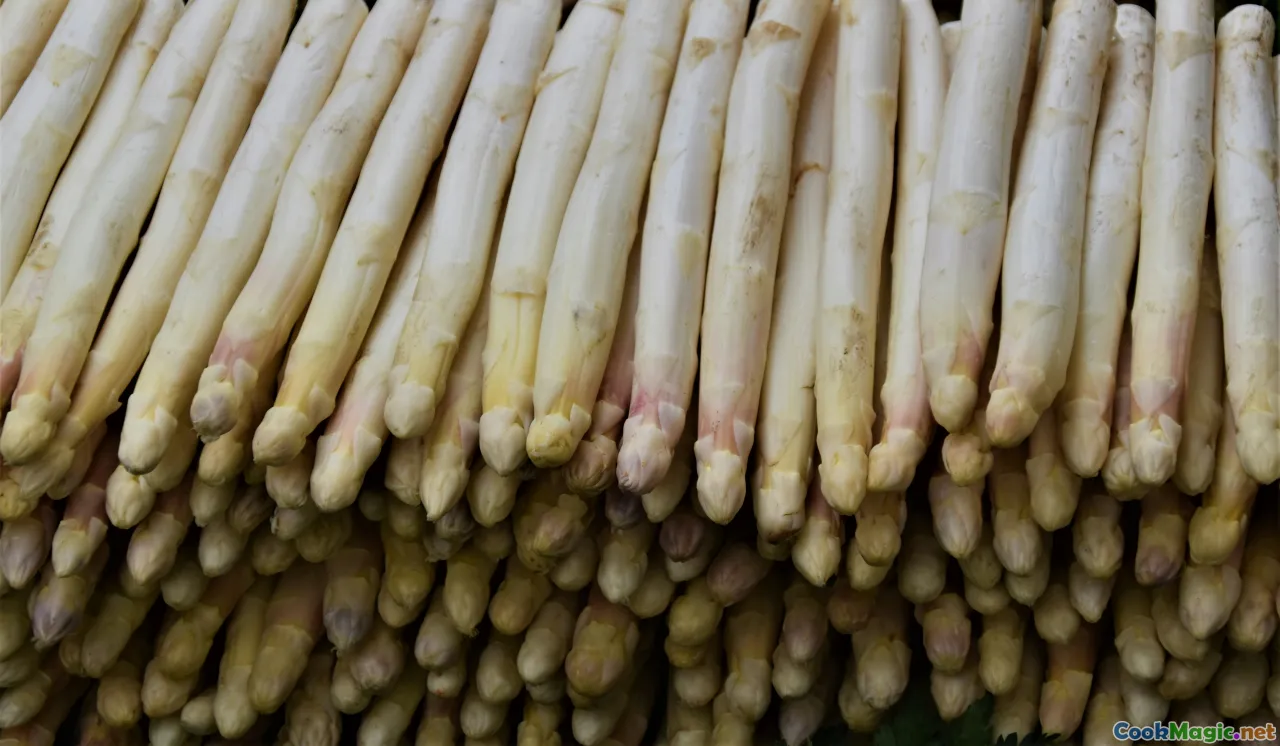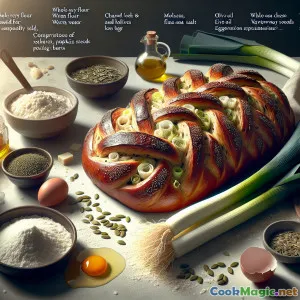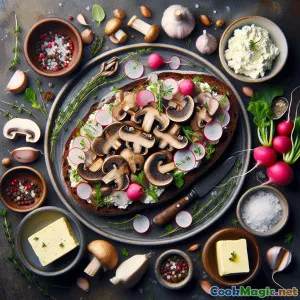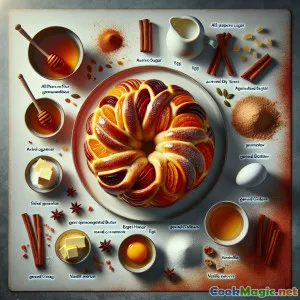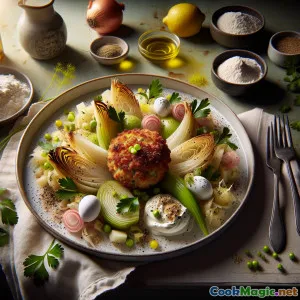
Frikadeller Đan Mạch với củ cần tây và củ cải ngựa
(Celeriac & Horseradish Danish Frikadeller)
(0 Đánh giá)
Khẩu phần
Kích thước khẩu phần
Thời gian chuẩn bị
Thời gian nấu
Tổng thời gian
Danh mụch
Quốc gia
Các nền ẩm thực
Cấp độ
Lượt bình chọn
0
0
Lượt xem trang
323
323
Cập nhật
tháng 10 03, 2025
tháng 10 03, 2025
Báo cáo
Báo cáo sự cố
Báo cáo sự cố
Nguyên liệu
-
300 grams Củ cần tây (celeriac), gọt vỏ và nạo thô
(Squeeze out excess moisture with a clean towel)
-
500 grams Thịt heo xay
(20% fat ideal for juiciness)
-
120 grams Hành tây, bào nhuyễn
(About 1 medium; squeeze out some liquid)
-
80 grams Táo chua, bào sợi
(Adds sweetness; squeeze lightly)
-
20 grams Củ mù tạt tươi, bào nhuyễn
(Adjust to spice preference)
-
1 large Trứng
(Binds the mixture)
-
120 ml Sữa nguyên kem
(For panade; use plant milk if preferred)
-
80 grams Bột vụn bánh mì (thường hoặc panko)
(Gluten-free breadcrumbs work well)
-
10 grams Mùi tây tươi, băm nhỏ
(Chỉ lá)
-
1 tsp Mù tạt Dijon
(Boosts savoriness)
-
1 tsp Vỏ chanh bào mịn
(Brightens flavor)
-
9 grams muối biển mịn
(About 1 1/2 tsp)
-
1 tsp Tiêu đen xay mới
(Theo khẩu vị)
-
0.25 tsp Nhục đậu khấu mới xay
(Classic Danish touch)
-
2 tbsp Bơ không muối
(Để chiên)
-
2 tbsp Dầu trung tính (dầu cải hoặc dầu hướng dương)
(Prevents butter from burning)
-
2 tbsp Bột mì đa dụng (dùng để rắc)
(Light dusting for crisp edges)
-
150 grams Sữa chua Hy Lạp
(Optional sauce base)
-
5 grams Củ cải ngựa rất tươi, bào
(For the sauce)
-
1 tbsp Nước chanh
(For the sauce)
-
5 grams Thì là tươi, cắt nhỏ
(For the sauce)
(Squeeze out excess moisture with a clean towel)
(20% fat ideal for juiciness)
(About 1 medium; squeeze out some liquid)
(Adds sweetness; squeeze lightly)
(Adjust to spice preference)
(Binds the mixture)
(For panade; use plant milk if preferred)
(Gluten-free breadcrumbs work well)
(Chỉ lá)
(Boosts savoriness)
(Brightens flavor)
(About 1 1/2 tsp)
(Theo khẩu vị)
(Classic Danish touch)
(Để chiên)
(Prevents butter from burning)
(Light dusting for crisp edges)
(Optional sauce base)
(For the sauce)
(For the sauce)
(For the sauce)
Dinh dưỡng
- Khẩu phần: 4
- Kích thước khẩu phần: 3 meatballs (180g)
- Calories: 600 kcal
- Carbohydrates: 22 g
- Protein: 28 g
- Fat: 38 g
- Fiber: 4 g
- Sugar: 6 g
- Sodium: 900 mg
- Cholesterol: 135 mg
- Calcium: 120 mg
- Iron: 2.7 mg
Hướng dẫn
-
1 - Prep the roots:
Peel celeriac, coarsely grate, and squeeze out excess moisture in a clean towel. Grate onion (and apple if using); lightly squeeze to remove extra liquid.
-
2 - Make the panade:
Whisk milk and breadcrumbs in a large bowl. Let stand to hydrate until thick and spoonable.
-
3 - Build the base mixture:
Add ground pork, egg, grated horseradish, parsley, Dijon, and lemon zest to the panade. Mix with a fork or your hand until slightly tacky.
-
4 - Season generously:
Add salt, black pepper, and nutmeg. Mix evenly, ensuring seasoning is distributed throughout.
-
5 - Fold in vegetables:
Gently fold in the grated celeriac, onion, and optional apple until well dispersed without overmixing.
-
6 - Optional dill-horseradish yogurt:
Stir yogurt with extra horseradish, lemon juice, dill, and a pinch of salt. Chill until serving.
-
7 - Preheat and shape:
Heat a large skillet over medium. Add butter and oil. With wet hands, form 12 oval patties (about 40–50 g each). Lightly dust with flour if desired.
-
8 - Fry first batch:
Cook half the frikadeller without crowding. Fry 5 minutes until deep golden, flip, then cook 5 minutes more. Adjust heat to prevent scorching.
-
9 - Fry second batch:
Repeat with remaining patties, adding a touch more butter/oil if needed. Aim for an internal temperature of 70°C/160°F.
-
10 - Rest and Serve:
Drain briefly on paper towel, rest 2 minutes, then serve with dill-horseradish yogurt, rye bread, and pickles if desired.
Peel celeriac, coarsely grate, and squeeze out excess moisture in a clean towel. Grate onion (and apple if using); lightly squeeze to remove extra liquid.
Whisk milk and breadcrumbs in a large bowl. Let stand to hydrate until thick and spoonable.
Add ground pork, egg, grated horseradish, parsley, Dijon, and lemon zest to the panade. Mix with a fork or your hand until slightly tacky.
Add salt, black pepper, and nutmeg. Mix evenly, ensuring seasoning is distributed throughout.
Gently fold in the grated celeriac, onion, and optional apple until well dispersed without overmixing.
Stir yogurt with extra horseradish, lemon juice, dill, and a pinch of salt. Chill until serving.
Heat a large skillet over medium. Add butter and oil. With wet hands, form 12 oval patties (about 40–50 g each). Lightly dust with flour if desired.
Cook half the frikadeller without crowding. Fry 5 minutes until deep golden, flip, then cook 5 minutes more. Adjust heat to prevent scorching.
Repeat with remaining patties, adding a touch more butter/oil if needed. Aim for an internal temperature of 70°C/160°F.
Drain briefly on paper towel, rest 2 minutes, then serve with dill-horseradish yogurt, rye bread, and pickles if desired.
Thông tin thêm về: Frikadeller Đan Mạch với củ cần tây và củ cải ngựa
Juicy Danish pork frikadeller with sweet celeriac and fiery horseradish, pan-fried golden and served with dill-horseradish yogurt.
Why these frikadeller are different\nCeleriac and Horseradish Frikadeller take Denmark’s beloved pan-fried meatballs in a brighter, vegetable-forward direction. Classic frikadeller rely on a pork-and-panade base for tenderness, but here the sweet earthiness of celeriac and the zing of fresh horseradish reshape the profile: lighter, juicier, and gently peppery. The result is comfort food that still feels nimble—a welcome twist when rich winter fare begs for freshness.\n\n## Flavor and texture notes\n- Celeriac’s role: Coarsely grated celeriac softens during frying, releasing moisture into the pork and creating a remarkably juicy interior without greasiness. It adds a whisper of celery-anise complexity you can’t get from potato or carrot.\n- Horseradish heat: Freshly grated horseradish gives a floral, nasal warmth that’s more aromatic than aggressive. It brightens the pork like lemon does for fish. If using prepared horseradish, drain well and reduce the salt slightly.\n- Balanced savoriness: A classic Danish touch—nutmeg—plays nicely with the celeriac’s sweetness, while Dijon adds background depth without screaming “mustard.”\n\n## Tips for success\n- Squeeze well: Excess liquid from the celeriac and onion can prevent browning and cause the frikadeller to break. A firm squeeze in a towel is the single best step for perfect texture.\n- Don’t overmix: Mix just until the meat becomes tacky and cohesive; overworking tightens the proteins and can make the patties dense.\n- Shape with wet hands: Dampen your palms to prevent sticking. The traditional oval “quenelle” shape cooks evenly and browns beautifully.\n- Butter + oil: Butter adds flavor, oil raises the smoke point. Together they encourage deep, even browning.\n- Internal temperature: Aim for 70°C/160°F for pork. If your patties are thicker, lower the heat slightly and extend the cook by a minute per side.\n- Make-ahead: The mixture can rest, covered, in the fridge for up to 12 hours. Fry straight from cold; they’ll hold their shape even better.\n\n## Serving ideas\n- Classic plate: Serve with rye bread, pickled beets or cucumbers, and a spoon of dill-horseradish yogurt.\n- Weeknight bowl: Pile over warm barley or mashed potatoes with a shower of chives and a squeeze of lemon.\n- Brunch: Nestle into soft scrambled eggs with watercress and radishes; the horseradish shines here.\n\n## Substitutions and variations\n- Meat: Pork-veal blends are traditional; turkey works for a lighter take (reduce milk to prevent sogginess). For vegetarian, try a 50/50 blend of cooked green lentils and finely chopped mushrooms, add 1 extra egg, and increase breadcrumbs by 20 g.\n- Horseradish: If fresh isn’t available, use prepared horseradish (well-drained), or a teaspoon of wasabi paste for a different heat.\n- Gluten-free: Use gluten-free breadcrumbs and skip the flour dusting; a light cornstarch dusting gives similar crispness.\n- Dairy-free: Swap milk for oat milk and use a neutral mayo or plant yogurt in the sauce.\n\n## A brief history and cultural context\nFrikadeller are a humble cornerstone of Danish home cooking—pan-fried patties typically made with pork, a panade, onion, and gentle spices like allspice or nutmeg. They feature at family dinners, smørrebrød spreads, and cold in lunchboxes the next day. The dish traces to broader Northern European “frikadelle” traditions, cousins to German Frikadellen and Swedish biffar, yet Danes make them distinctly their own through seasoning, shape, and serving customs. Adding celeriac and horseradish is a modern Nordic nod that respects tradition while celebrating local produce and sharper, cleaner flavors.\n\n## Why celeriac and horseradish belong together\nCeleriac’s mild sweetness and moisture complement pork’s richness, while horseradish cuts through with aromatic heat. Together, they produce a meatball that tastes brighter and feels lighter, especially when paired with dill and lemon. It’s a small evolution that turns a winter staple into something that pops on the palate without losing its cozy soul.\n\n## Make it your own\n- Addable crunch: Fold in a handful of finely chopped toasted walnuts for texture.\n- Herb switch: Parsley can swap with lovage or chives.\n- Spice lane: A pinch of white pepper and allspice are classic; keep the nutmeg subtle so it doesn’t compete with horseradish.\n\n## Leftovers and storage\nCool completely, then refrigerate in an airtight container for up to 3 days. Reheat in a covered skillet over medium-low heat with a teaspoon of water to re-steam the centers, or enjoy cold on rye with pickles. They also freeze well (up to 2 months); thaw overnight and re-crisp in a pan.\n\n## Final thoughts\nThis recipe embodies the spirit of Danish comfort—familiar, unfussy, and communal—while leaning into the Nordic habit of highlighting seasonal produce and vivid, clean flavors. The celeriac makes each bite juicy and softly sweet; the horseradish lifts the dish from hearty to lively. Whether it’s a brisk weeknight or a relaxed Sunday lunch, these frikadeller feel both timeless and new.
Đánh giá công thức
Thêm bình luận & đánh giá
Đánh giá của người dùng
Dựa trên 0 đánh giá
Chưa có đánh giá nào được thêm vào.
Bình luận sẽ không được chấp thuận đăng nếu chúng là SPAM, lạm dụng, lạc đề, sử dụng ngôn từ tục tĩu, có nội dung tấn công cá nhân hoặc kích động thù địch dưới bất kỳ hình thức nào.
Xem thêm »


